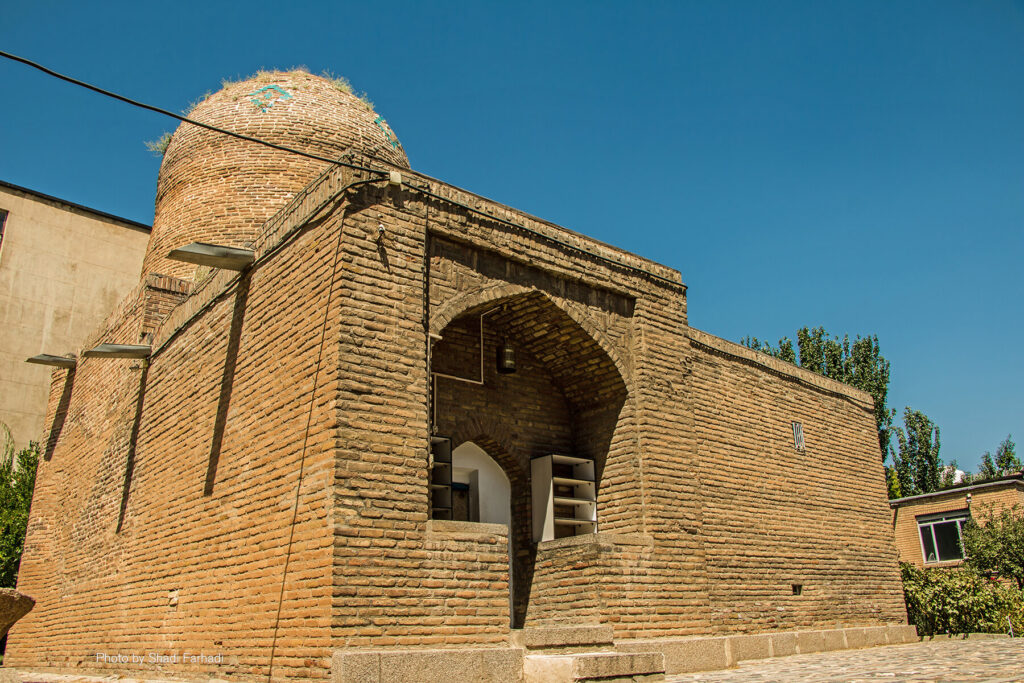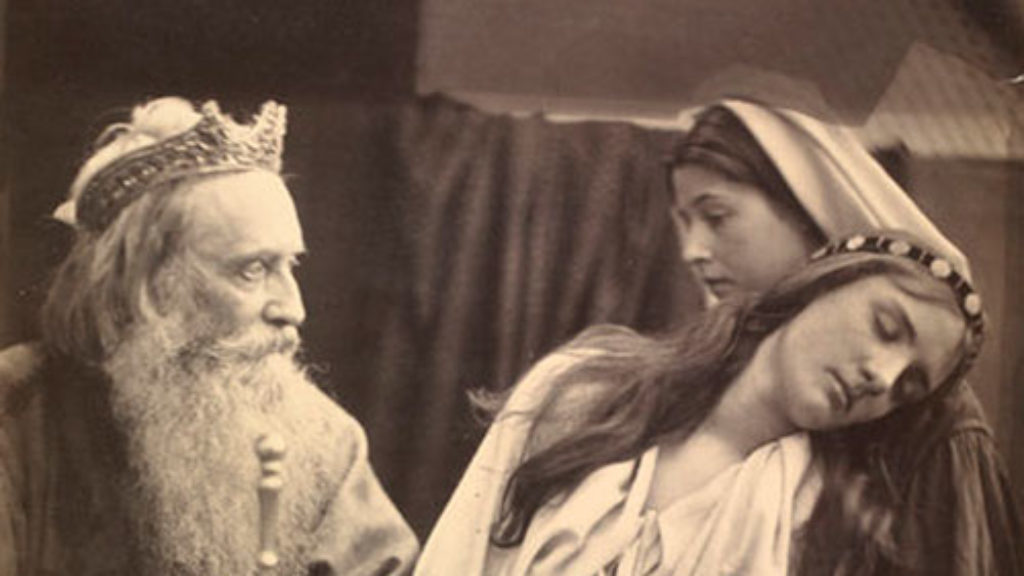Haman, Builder of Towers, Brother of Abraham?
In 2009, an Egyptian cleric named Safwat Hegazi unveiled the shocking secret of Starbucks coffee:
The girl in the Starbucks logo is Queen Esther. Do you know who Queen Esther was and what the crown on her head means? This is the crown of the Persian kingdom. This queen is the queen of the Jews in Persia. . . . Can you believe that in Mecca, Medina, Cairo, Damascus, Kuwait, and all over the Islamic world, hangs the picture of the beautiful Queen Esther . . . and we buy her products?!

Hegazi’s speech, which Adam J. Silverstein quotes in the introduction to his new book on the transformations of the Esther story in Islam, seems straight out of a Purim spiel, but it is only one of many interpretive manifestations of the story of Purim in Islamic countries in recent years. In 2011, amid rumors that the Israelis were planning to attack the al-Aqsa Mosque, Iranians marched to the popular pilgrimage site known as the “Tomb of Esther and Mordecai” to protest the “Holocaust of 77,000 Iranians.” This number is apparently an approximation of the total of 75,810 one gets by adding the 10 sons of Haman, 800 in Shushan, and 75,000 throughout the kingdom of Achashverosh (see Esther 9:6, 9:15, and 9:16). (When I read this, it reminded me of a great skit from the Israeli show Eretz Nehederet in which Iranian nuclear scientists observe “A Day of Remembrance for Shushan and Its Heroes” as they mournfully read the list of Haman’s fallen sons.)
Silverstein, a professor at Bar-Ilan University, tells the long historical backstory of such contemporary Islamic interpretations of the book of Esther. Veiling Esther describes how earlier Muslim interpreters reconciled the biblical narrative with the Qur’anic tradition or situated it within the annals of Iranian history. In each case, they had to “contend with the fact that the story’s details differed from the data that they inherited.” Silverstein also offers a close reading of an Arabic retelling of the Esther story by a 14th-century Samaritan historian and argues, more generally, that by presenting Esther within the “genre of ancient Persian storytelling”—including the folkloric 1,001 Nights—particular details within the biblical story, as well as Jewish interpretive traditions, are better understood.
The Purim story is not told in the Qur’an. Therefore, it is not surprising that none of its characters are mentioned. That is, except for Haman, who appears in the Qur’an six times—as an adviser to Pharaoh, king of Egypt (28:4–6, 28:8, 28:38, 29:39, 40:23–24, 40:36–37). This Haman helps Pharaoh in his efforts to combat the “God of Moses.” Among other things, he builds a Babel-like tower.

How and why did Haman show up in the Qur’an 800 years before the time of Achashverosh and 1,200 miles away from Shushan? Silverstein recounts “creative attempts [that] have been made to find an Egyptian functionary, called ‘Haman’ (or the like), with whom to identify the Quranic figure.” As he documents, debates on this curiosity still rage on the internet between “Christian missionaries and Muslim apologists,” the latter of whom claim that Haman’s appearance in the Qur’an is “miraculous” and proves the Qur’an’s divine origins. While admitting that if the Haman of the Qur’an is meant to be the Haman of Megillat Esther—it “is, to put it bluntly, a howler”—Silverstein attempts to explain how this Qur’anic cameo came to be.
As both ancient rabbis and modern biblical scholars have noticed, there are literary similarities between the biblical depictions of the “diaspora courts” of Egypt and Esther. As Silverstein notes, many of these parallels—displaced Israelite courtiers, the removal of royal rings, the riding of an Israelite dignitary in processions through the streets—are actually between the court intrigues of Esther and those of the Egypt of the Joseph story, not the Egypt of the Exodus story. Nonetheless, Silverstein marshals these similarities together with a midrash in Pirke d’Rabbi Eliezer to argue that there was “a certain measure of narrative fluidity between the Achaemenid and Pharaonic courts,” as depicted in the Bible and that precisely this “narrative fluidity” underlies Haman’s surprise appearance in the court of Pharaoh in the Qur’an. However, the midrash from Pirke d’Rabbi Eliezer just has Zeresh asking Haman, “Have you not heard what was done to Pharaoh?” As a precedent for the Qur’an’s Haman, this is a pretty thin reed.
Silverstein cites another rabbinic precedent for the Qur’an’s historical displacement of Haman: the Talmud asks, “What is a hint to Haman from the Torah?” and answers by quoting Genesis 3:11: “Did you eat of the tree from which I had forbidden you to eat?” (Chullin 139). Silverstein suggests that here the rabbis “obliquely” place Haman in a “pre-Esther” context. But under no stretch of even their renowned creative imagination were the rabbis moving Haman from the narrative context of Shushan to the Garden of Eden or anywhere else. An intertextual allusion is not a time machine.
In the entry on “Haman” in a lexicon, Silverstein describes as “the most complete and ambitious dictionary of the Persian language ever compiled,” the author, Ali-Akbar Dehkhoda writes: “Haman was the name of the brother of our Master Abraham, and he was consumed by fire at the time when the idols were burned.” The next entry, on Purim (in Persian, Haman-Suz), states: “On this day, Jews make an effigy that they name ‘Haman’ (the vizier of Ahashwerosh), hang it, throw it into a fire, and celebrate joyously.” As Silverstein notes:
The obvious interpretation of this odd data is that Abraham did indeed have a brother, whose name sounded like Haman but was, actually, “Haran.” . . . [A]lready in the first half of the twelfth century, a Persian text states that (Haran’s son) Lot was the “son of Haman.”
This Persian tradition, argues Silverstein, might be “a simple mix-up” but is “not as foolish as it may seem at first glance.” There is an early postbiblical tradition, beginning with the book of Jubilees, that Haran, Abraham’s brother, died by fire. (James Kugel has suggested that Ur of the Chaldees, mentioned in Genesis 11:28 as the location of Haran’s death, could be interpreted as the “fire,” or, of the Chaldees). In Jubilees’s telling, Haran went down in flames trying to save their father’s idols. Genesis Rabba’s famous version of this tradition is that both Abraham and Haran were thrown into a fiery furnace by Nimrod. Because of his perfect faith, Abraham emerged unscathed, but Haran was consumed.
Although Silverstein doesn’t mention it, the Talmud (Sanhedrin 64b) describes a Purim custom of children jumping through fire, and there are numerous accounts through the centuries, some as early as the 5th century, of Jews burning Haman in effigy on Purim. Thus, Haman and Haran were both remembered in connection with fire. And Nimrod, who in rabbinic legend sent Haran to his death, was also credited with having built the Tower of Babel. Somehow, this seems to have led to Haman building a tower for Pharaoh in the Qur’an, which Islamic scholars “routinely equated with the Tower of Babel.”
Oddly, the Babylonian Talmud (Bava Batra 91a), which was produced in a Persian context, tells us that both Abraham’s (and by extension, Haran’s) and Haman’s mothers were named Amthelai. Based on such surprising texts, Silverstein raises the possibility that interpretive motifs such as this from within both Jewish and Islamic traditions might have led to the uniquely Islamic tradition that Abraham and Haman were brothers.
The impressive historical detective work of Unveiling Esther notwithstanding, it might take fulfilling another Talmudic tradition about Purim—drinking something much stronger than Starbucks coffee—to arrive at the state of consciousness in which there is no distinction between Haman of Esther and Haman of the Qur’an.
Comments
You must log in to comment Log In
Suggested Reading

18 Questions with Jeremy Dauber: The Purim Edition
Who ruled the Borscht Belt: Allan Sherman or Lenny Bruce? Jewish comedy expert Jeremy Dauber casts his vote in a humorous interview—just in time for Purim.
Black Fire on White Fire
The scroll, which was originally a secular technology, became closely associated with Judaism at a time when Christians were adopting the codex for their holy books.
The Bible Scholar Who Didn’t Know Hebrew
The surprising story of Elias Bickerman and his scholarship.

Hidden Faces and Dark Corners: Megillat Esther and Measure for Measure
What happens when the hidden is revealed? Reading Megillat Esther alongside one of Shakespeare’s “problem plays” shows that question to be at the heart of Purim’s paradox.
David Z
One can understand just a little of the frustration Jews felt living in Islamic lands with their bizarro Torah. Xena Warrior Princess reminded me of the Quran with Abraham meeting Hercules and whatnot. Perhaps the most ridiculous of Quranic mixups is Mary mother of that famous Jew and Miriam sister of Moses. Oy vavoi as they say.